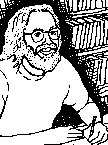
North America Turns Right; South America Turns Left
Marc Becker
The Monitor
November 16, 2004
Recent elections illustrate once again just how out of sync the United States is with the rest of the Americas. While politics of fear and division cause the U.S. to lurch seemingly uncontrollably to the right, voters in the South American countries of Uruguay and Venezuela chose a path of hope, peace, and prosperity.
In the historic presidential elections on October 31, Uruguay gave the socialist candidate Tabaré Vásquez a resounding victory. He is the first leftist to be elected president in that country, and his triumph has awakened great expectations of positive changes. Voters also passed a constitutional amendment protecting public ownership and management of water. The country is set to reinstate health, education, and housing programs that the previous conservative government eliminated through its neo-liberal economic policies, and to grow out of its current economic crisis.
At the northern end of the continent, voters on October 31 also handed left-populist president Hugo Chavez a decisive victory in local and regional elections. His party won control of governorships in at least 18 of 22 states, and in more than 80 percent of mayoral posts. Over the past three years, conservative opposition forces have unsuccessfully attempted to overthrow Chavez’s government through a military coup, a management shutdown of the state oil industry, and finally in August of this year with a failed recall referendum. Instead, support has grown for government programs that provide housing, health care, education, land and food to people in marginalized and impoverished neighborhoods.
Vásquez and Chavez are part of what in recent years has been a decided progressive leftward turn in South America. Repeatedly candidates that stand in strong opposition to the U.S.’s militarist, imperialist, and free-trade economic polices win decisive victories. Emerging out of 17 years of a brutal U.S.-backed military dictatorship, Chile is now governed by socialist Ricardo Lagos. After a two-decade struggle, in 2002 Brazil elected Workers’ Party candidate Luiz Inácio Lula da Silva on a leftist platform. Lula emerged out of labor union struggles and vows to fight for the urban poor and landless peasants.
In Bolivia, Movement to Socialism candidate Evo Morales came within a hair of winning the presidency. When the eventual conservative victor Gonzalo Sánchez de Lozada cut government funding and attempted to sell natural resources at cut-rate prices to foreign corporations, a popular mobilization in the streets removed him from power. Street mobilizations in Ecuador and Argentina similarly removed governments that favored neo-liberal economic policies that cut services for the poor while greatly benefitting the wealthy. In Argentina, Nestor Kirchner now is president and governs from the left.
Today Colombia under Alvaro Uribe is the only country in South America with a truly conservative, pro-U.S. government, but that may not last long. Last year the capital city Bogotá elected Luis Eduardo “Lucho” Garzón of the leftist Independent Democratic Pole as its mayor, and he stands in a good position to defeat the right-wing Uribe in the 2006 presidential election. Garzón’s victory would end Uribe’s policies of slashing spending on social programs and militarizing the country.
Two decades ago British prime minister Maggie Thatcher maintained that There Is No Alternative (TINA) to neo-liberal policies and corporate-led globalization, even while those polices dramatically widened income gaps and led to increased violence, war, and instability. Left nationalist governments in South America demonstrate that there are very real alternatives. They offer a hope of mitigating the negative effects of U.S. imperialism and building a democracy that favors people rather than multi-national corporations.